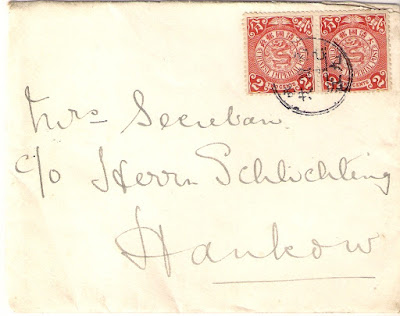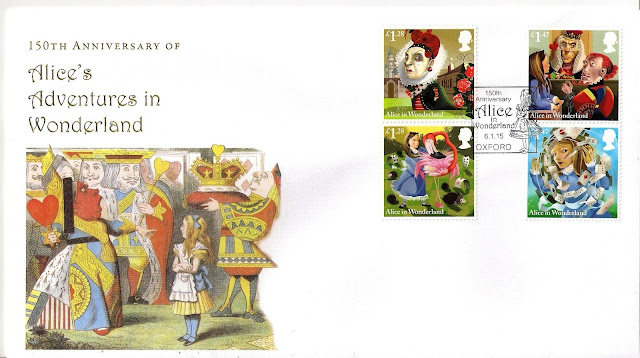 |
| 2014: The Manx Ark |
The Rare Beeeds Survival Trust was established in 1973 with the growing realising that we were loosing unique and specialised breeds. The Manx Post Office celebrated the Trust and the centenary of the Southern District Agricultural Society with this mini sheet. The Isle of Man's farmers are an important part of "The Manx Ark" project, protecting breeding animals unlikely to be affected by an epidemic in Britain; the island Noah's Arc. Who knows what qualities and immunities will be needed in the future.
Lets turn to the stars of the show starting on the top row with the sheep that is native to the Isle of Man, the
Manx Loaghtan Sheep which can have two, four or even six horns and is related to the prehistoric breeds that lived on the islands of Scotland. Next is the
Northern Dairy Shorthorn, these red and white beasts were once the most common sight on the island but now are down to less than 50 females. At the end of the row is the beautiful
Cotswold Sheep native to England whose wool is popular with spinners as when hand-combed all the fibres can be pointed in the same direction meaning non of that dreaded itching when worn next to the skin for the wearer.
Bottom row are the
Exmoor Ponies, fewer than 300 breeding mares survive and most live in a more or less wild on Exmoor. well adapted to survive in cold and wet weather. A pig I have observed from paintings that is a favourite of artists is the
Gloucestershire Old Spot Pig. For registration in the breed they must have at least one black spot and be predominately white. Lastly is the
Irish Moiled Cattle. 'Moiled' is from the Gaelic "Maol" and refers to the bumps or crown on the head. Very docile it can live off poor quality grazing and is partial to willow and ivy.
From 1900 to 1973 26 native British breeds were lost and are now extinct, including the Limestone Sheep, a unique hardy hill breed with high wool quality and the added advantage that it could give birth at different times of the year. It was also known as the Silverdale of Farelton Fell, a place of limestone pavements near where my Grandmothers family farmed. It is sobering thought to think she would have been familiar with this breed and yet I don't even know what it looked like.
The theme for the GB Post and Go machine stamps in 2012 was British Farm Animals. As the cattle stamps didn't include my own favourite breed, the
Belted Galloway. and I don't have any of the pigs here are a flock of sheep.
Clockwise starting bottom left with the
Soay, a robust sheep found mostly in Scotland and amongst the most primitive of breeds (like the Manx Loaghtan who we have already met) and the first domesticated sheep in Northern Europe. The
Jacob, originated in Syria and was first introduced into Britain as an ornamental breed.
Welsh Mountain Badger Face, an ancient breed mentioned in the Domesday Book.
Dalesbred, whose hard wearing wool is favoured for the making of tweed and carpets. This sheep is seen on the hills and dales of Yorkshire and is also the emblem on the cancel. Next the
Suffolk and the
Leicester Longwool, both sheep whose wool if favoured for fine knitting.
The illustrator and printmaker Robert Gillmore has created many of the past pictorial Post and Go series and he was also chosen for the British Farm Animals sets using the same techniques
. Royal Mail explains
"For his colour linocuts, Robert first makes a pencil sketch and then cuts a number of linoleum block, one for each colour in the design. To create the final image, he prints the blocks in sequence by hand using an 1860 Albion Press with water-based inks"
An entry to Sunday Stamps II theme of - Farming Farm Animals - go down to the farm
here























































